France: Brittany and Normandy 2018
Our day started with a French breakfast include in the price of the room. We headed toward Paris for the next leg of our trip which included 2 stops along the way. The first stop was the Château Gaillard ("Strong Castle”) as we approached a mammoth stone structure appears on top of a high hill, stunning. The parking was free and easy to find. Yay! We had to ascend a 40 foot almost vertical ascent which turned out to be the inner dry moat of the castle. Huffing and puffing we reached the top of the moat and found ourselves at the base of a huge stone structure that loomed over us. The ruin is a 700 year old medieval castle, located 300 feet above the town of Les Andelys and over looks the Seine River. Its Construction began in 1196 under the auspices of King Richard the Lionhearted, who was simultaneously King of England and Duke of Normandy. The castle was expensive to build, the majority of the work was done in less than two years an unusually short period of time. It was built by over 6,000 workers and completed at the same time as the construction of the town below. Château Gaillard had a complex and advanced design for its time, using early principles of concentric fortification and was one of the earliest European castles to use machicolations, openings between walls and floors where boiling water or cooking oil could be dropped on attackers at the base. The castle consists of three enclosures called baileys separated by dry moats with a Keep in the most protected inner bailey. The majority of the castle can be accessed for free. There is a small 3 euro charge to visit the Keep or inner bailey where the king’s family and his entourage resided. It is not hard to imagine the life and history that went on here, extremely interesting. King Richard died of an arrow wound just 2 years after the completion of the castle. His brother John Lackland succeeded him but did not have the military mind of Richard. King Philip Augustus of France took advantaged and attacked the castle. They dug tunnels at the bass of the 10 feet thick outer stone walls and created fires underneath the walls causing them to collapse allowing the French to take control of the outer bailey. They than used massively large catapults to hurl giant boulders at the walls of the middle bailey allowing them to gained access. King Philip than put the castle under siege cutting off all supplies. The British supposedly had enough food within the Keep to last a year but since taking in the villagers for their protection the supplies were quickly dwindling. Roger de Lacy, in charge of the castle at the time threw the villages out calling them ‘useless mouths’. The French allowed passage of the first group of villagers ostracized but cut off the passage of hundreds more. These villagers got stuck between the castle and the French army in a small strip of barren rocky land for almost a year. Most died agonizing deaths from starvation and exposure to the harsh winter. The siege lasted 16 months before King John Lackland surrender to the French. The next
Patricia Simpson
15 chapters
16 Apr 2020
12 Normandy Château Gaillard
October 11, 2018
Our day started with a French breakfast include in the price of the room. We headed toward Paris for the next leg of our trip which included 2 stops along the way. The first stop was the Château Gaillard ("Strong Castle”) as we approached a mammoth stone structure appears on top of a high hill, stunning. The parking was free and easy to find. Yay! We had to ascend a 40 foot almost vertical ascent which turned out to be the inner dry moat of the castle. Huffing and puffing we reached the top of the moat and found ourselves at the base of a huge stone structure that loomed over us. The ruin is a 700 year old medieval castle, located 300 feet above the town of Les Andelys and over looks the Seine River. Its Construction began in 1196 under the auspices of King Richard the Lionhearted, who was simultaneously King of England and Duke of Normandy. The castle was expensive to build, the majority of the work was done in less than two years an unusually short period of time. It was built by over 6,000 workers and completed at the same time as the construction of the town below. Château Gaillard had a complex and advanced design for its time, using early principles of concentric fortification and was one of the earliest European castles to use machicolations, openings between walls and floors where boiling water or cooking oil could be dropped on attackers at the base. The castle consists of three enclosures called baileys separated by dry moats with a Keep in the most protected inner bailey. The majority of the castle can be accessed for free. There is a small 3 euro charge to visit the Keep or inner bailey where the king’s family and his entourage resided. It is not hard to imagine the life and history that went on here, extremely interesting. King Richard died of an arrow wound just 2 years after the completion of the castle. His brother John Lackland succeeded him but did not have the military mind of Richard. King Philip Augustus of France took advantaged and attacked the castle. They dug tunnels at the bass of the 10 feet thick outer stone walls and created fires underneath the walls causing them to collapse allowing the French to take control of the outer bailey. They than used massively large catapults to hurl giant boulders at the walls of the middle bailey allowing them to gained access. King Philip than put the castle under siege cutting off all supplies. The British supposedly had enough food within the Keep to last a year but since taking in the villagers for their protection the supplies were quickly dwindling. Roger de Lacy, in charge of the castle at the time threw the villages out calling them ‘useless mouths’. The French allowed passage of the first group of villagers ostracized but cut off the passage of hundreds more. These villagers got stuck between the castle and the French army in a small strip of barren rocky land for almost a year. Most died agonizing deaths from starvation and exposure to the harsh winter. The siege lasted 16 months before King John Lackland surrender to the French. The next
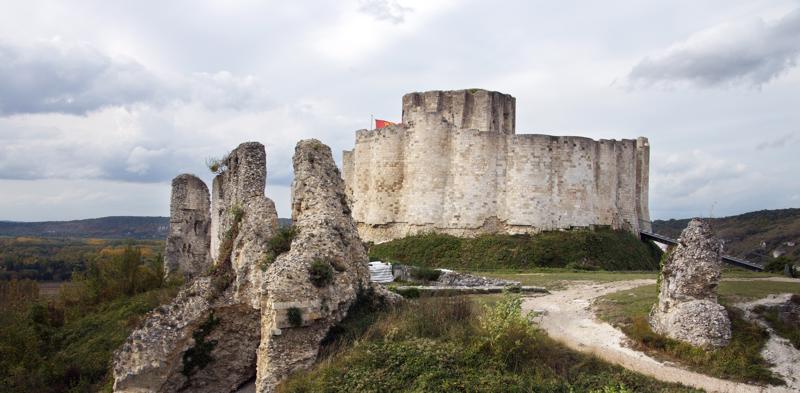
following statements fast forward 650 plus years of the castle’s history: rebuilt and used during the 100 year war, flip flopping control between the British and France; Margaret and Blanche of Burgundy future queens of France where imprisoned here convicted of adultery; King Henry IV in 1599 ordered demolition of the castle perceiving it as threat if rebuilt from its ruins. Monks where allowed to quarry the stone for their monastery; In 1611, the demolition of Château ended; Finally in 1862 it was classified as a Monument Historique, safe at last. We left the castle and wound our way down to the town of Les Andelys located along the Seine River. It is a old French town with natural old world charm. A real town not just a tourist town, people live and work here. Today’s French don't knock down the old but build upon it mixing the old with modern day conveniences. We continued on to our next hotel booked for 2 days. The La Clef Des Champs located 40 minute away in Bennecourte . This was another converted farm house, at first appearance we could have done a U turn and headed out. However, the inside was, clean, modern, spacious and comfy. We were the only tenants and the owners treated us like kings. Again the room was up a one and half flight of stairs and a 50 foot walk from the car. Jim’s just loving that bag. Another hotel picnic and dream land.
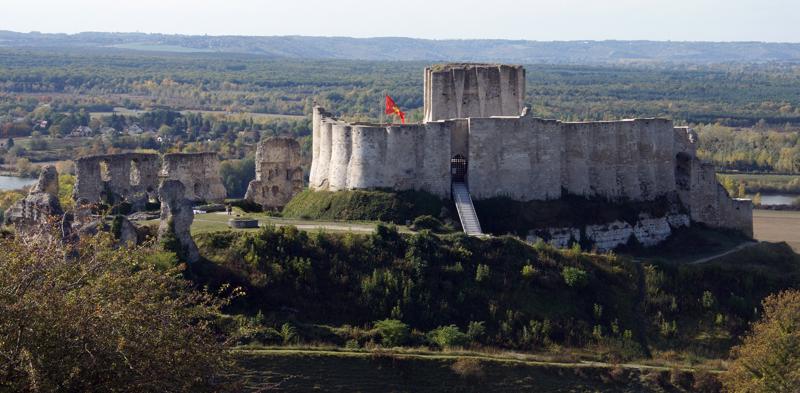
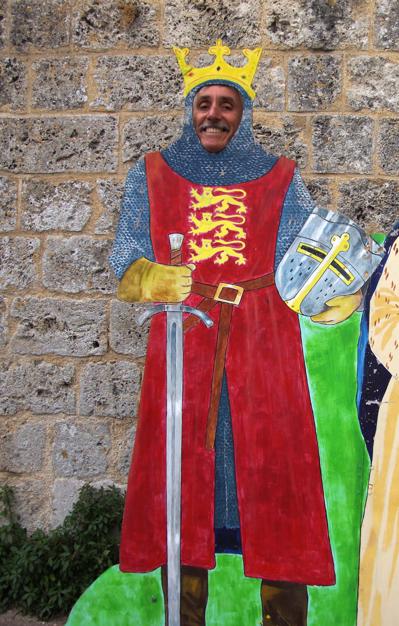
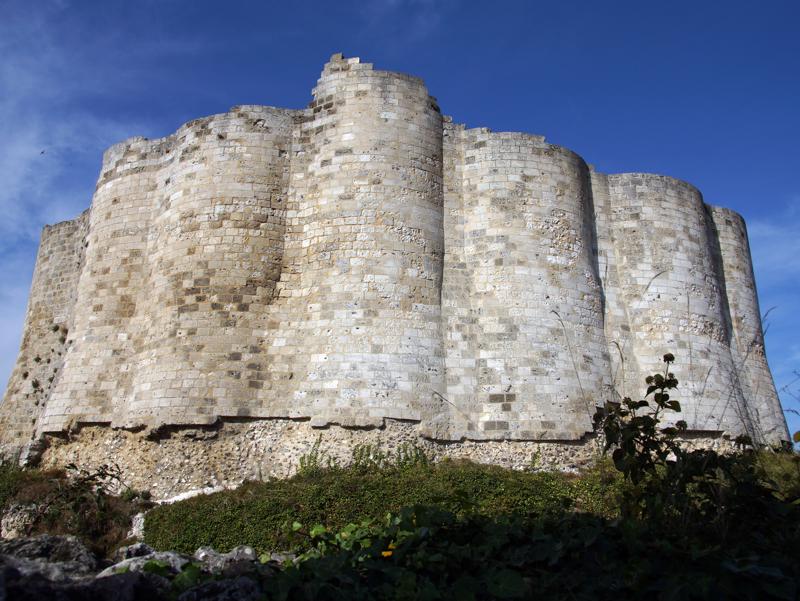
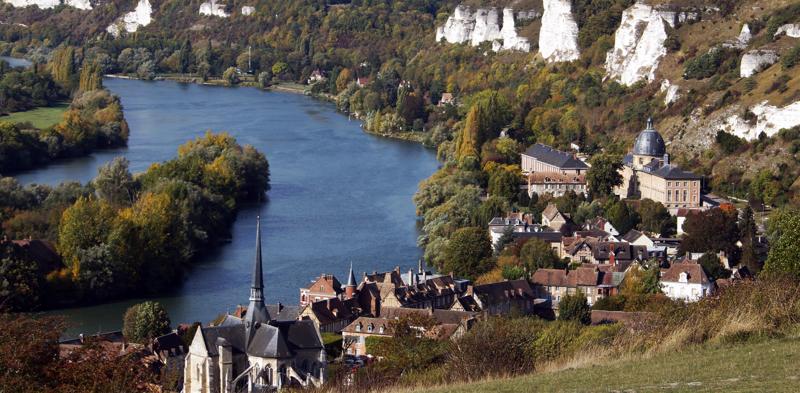
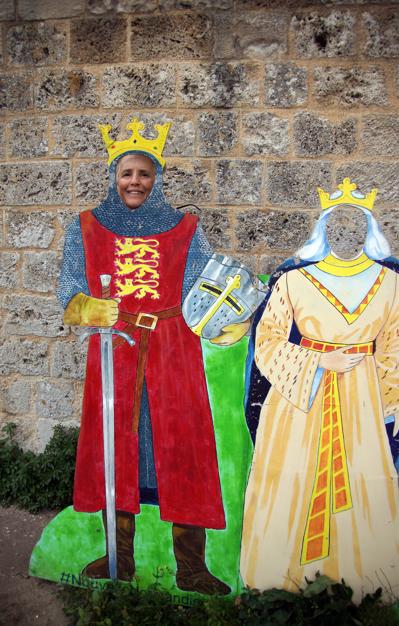
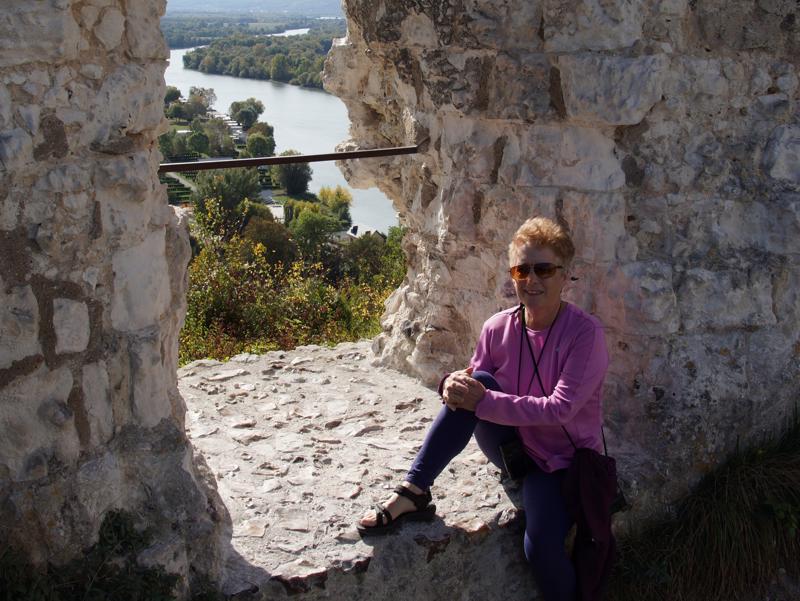
1.
Chapter 1 Newark to Orly France
2.
Chapter 2: Orly to Chartres
3.
Chapter 3 Day 1 In Brittany
4.
Chapter 4 Brittany Château de Suscinio
5.
5 Brittany Market Day & Queberon
6.
6 Brittany Gulf Of Morbihan
7.
7 Normandy; Mont-Saint-Michel
8.
8 Normandy Omaha and Utah Beaches
9.
9 Normandy Gold, Juno & Sword Beaches
10.
10 Normandy White Cliffs of Étretat
11.
11 Normandy White Cliffs Day Two
12.
12 Normandy Château Gaillard
13.
13 Normandy Giverney, Monet House
14.
14 Paris Day 1
15.
15 Paris Day 2
Share your travel adventures like this!
Create your own travel blog in one step
Share with friends and family to follow your journey
Easy set up, no technical knowledge needed and unlimited storage!